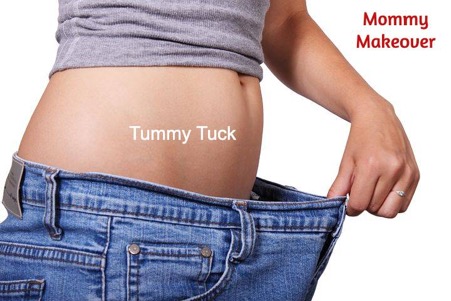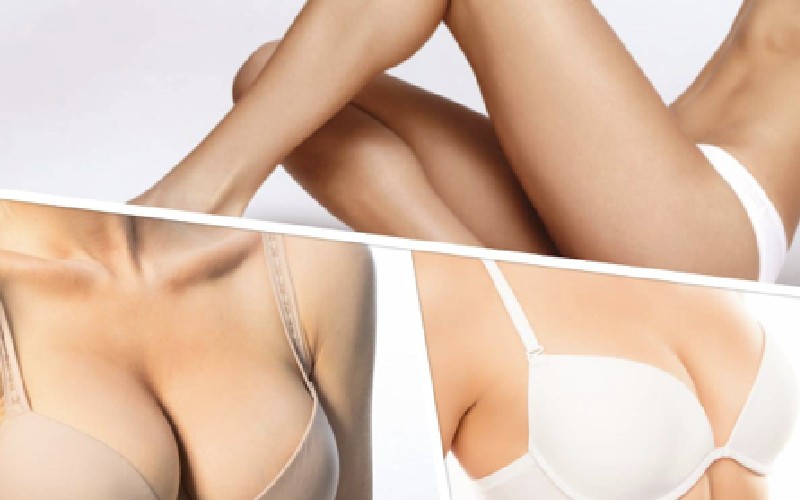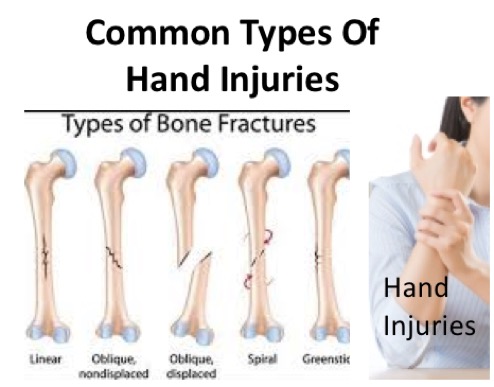Sure Fire Ways To Flatten Your Belly

You lose a few pounds and do sit-ups until you drop – but your potbelly still looks like, well, a potbelly. In fact, it’s as big and as noticeable as ever. What gives? If weight loss and sit-ups can’t budge a pot, what on earth can?
A program that attacks your belly bulge from every direction can. You see, potbellies aren’t just bumping on a log – they’re complicated (and unsightly) phenomena made possible by several different factors. A few of those factors you can’t control (like genetics). But most of them you can. In addition to the obvious (like extra body fat and a high-fat diet that contributes to it), they include the tone and strength of muscles in your pelvis, shoulders, chest, abdominal area, and back. There are also the crucial variables of posture and the health of your spine. Losing weight and doing sit-ups address only a small part of these factors. So what you need is a multifaceted frontal assault on the enemy.
In the following tips, we try to provide you with strategies for exactly that. But don’t expect results overnight. Experts say that it can take two to three months of concentrated effort to flatten a pot.
Check for a flat back. A potbelly can result from a swayback. As your lower spine curves forward, your tummy does too, and the abdominal organs bulge out. To see whether your spine curves forward too far, stand against a wall and press the small of your back against it. You should be able to flatten your back with only the slightest bend in your knees. If you can’t, it’s time to start a program like the one below to strengthen your postural muscles and abs.
Dig in. If you don’t have any coal, try digging a garden. This requires the same spinal twist and abdominal contraction against resistance as shoveling coal.
Dust off your racket. Tennis is also a good ab builder for this reason. When you hit the ball, you have to contract the oblique muscles for a good shot.
Row, row, row. When you’re at the gym, choose the rowing machine over the stair-climber or stationary bike. The rowing action provides some ab strengthening along with a great cardio workout.
Do ab workouts twice daily. It’s more effective to do abdominal exercises slowly using the correct form than to knock yourself out with lots of repetitions done quickly. Dividing the workout ensures that you don’t overdo your exercise sessions.
Exhale! Holding the breath during exercise makes blood pressure soar and increases the pressure in the abdomen, making it stick out even more. Habitual breath-holders beware: This nasty habit can also lead to a hernia in which the abdominal lining with intestines protrudes through a split in the vertical abdominal muscles. While this is more a cosmetic problem than a health threat, it can make a potbelly permanent. So it’s important to breathe out whenever you work out or contract your abs. Counting out loud helps you check that you’re breathing properly.
Measure yourself. Take a tape measure to your tummy at least once a month. That way you’ll notice changes before they get out of hand. If you see unwanted growth in your girth, step up your program.
Bone up on good nutrition. Osteoporosis can fracture your vertebrae and hunch your spine. These developments shorten the abdominal cavity until your belly has no place to go but out. On a diet rich in low-fat dairy products, it’s possible to get enough calcium from the food you eat. However, most women fall short about 500 milligrams a day without supplementing. He recommends getting 1,000 mg. a day for men and premenopausal women and 1,500 mg. for postmenopausal women. And cut back on caffeine, alcohol, and cigarettes. The excessive use of these drugs interferes with your bones’ ability to retain calcium.
AB TONERS
The abdominal muscles are designed to contain our organs like a woven basket. The rectus muscles run vertically, crossed by the obliques. As these muscles lose mass, they lose the force to restrain the gut.
The process accelerates in the decade after age 55 when both men and women lose 15% to 20% of their muscle mass. But you can lose muscle tone at any age if you’re not careful.
Do the head-to-knee crunch. Lie on your back, knees bent, feet flat on the floor. Bring your left knee up slowly toward your chest. Begin to exhale slowly by counting aloud to three as you lift your head and try to touch your forehead to your left knee. Hold this position as you count aloud to six. Return your head and foot to the floor. Repeat with the right leg. Do 12 times with each leg.
Try a double head-to-knee crunch. While lying on your back, knees bent, slowly bring both knees to your chest simultaneously. Exhale and lift your head. Try to touch your forehead to your knees while counting out loud to six. Return head, then legs to the floor. Repeat 12 times.
Combine a crunch with a shoulder lift. While lying on your back, knees bent, lift your right knee up toward your chest as you count aloud to six. Tuck your chin toward your chest, exhale, then lift your left shoulder off the floor, pulling it toward your right knee. Return your left shoulder, head and then right foot to the floor. Repeat 12 times on each side.
Opt for an oblique crunch. Lie on your back, knees bent, feet flat on the floor. Rest your fingertips on your shoulders or at the base of your neck. (Be careful not to pull on your neck.) Breathe in through your nose. Then, as you breathe out through your mouth, curl up and bring your left elbow toward your right knee, keeping your lower back on the floor. Lower. Repeat six times on each side, alternating the right and left sides.
Do a pelvic tilt. Lie in the same bent-knee position as above, with arms at sides, but press your lower back into the floor so that your pelvis tilts upward. Maintain this tilt as you straighten your knees by slowly sliding your heels along the floor. Stop when you can no longer hold a full tilt position. Hold that position and count aloud to 6. Bring first one leg then the other back to the starting position, maintaining the pelvic tilt throughout. Hold the starting position for 6 more counts. Relax. Repeat 12 times.
PAUNCH PREVENTERS
Ab-toning exercises alone miss another muscle group responsible for a prominent paunch: the hip flexors.
These muscles, which tip your hips, also help keep your tummy flat. As the hip flexors tighten, the hips rollback, making your paunch stick out. So you have to keep those muscles long and loose so your pelvis will tuck neatly under your ribs.
Hug your knee. Lie on your back with knees bent, feet on the floor. Exhale as you bring both knees toward your chest. Put your hands around one knee and clasp it tightly to your chest. Slide the other leg down until it is flat against the floor, trying to touch the back of your knee to the floor. Hold while you count out loud to 6. Slowly return to the starting position. Relax for a count of 6. Alternate legs, repeating three times with each leg.
Grab a foot and stretch. Lie on your right side, resting your head on your arm, and bring your left heel toward the left buttock. Keep your bottom leg slightly bent. Grasp the top part of your left ankle with your left hand and push the knee back, past the right leg. Do not arch your back. Hold this position as you count out loud to 15. Repeat three times with each leg.
BODY STRAIGHTENERS
If your spine shortens – due to aging, osteoporosis, weak muscles, poor posture, or any combination of these – it shrinks the back wall of your abdominal cavity, making your organs spill forward into an unsightly bulge. But you can help elongate the spine (and keep abs taut) by strengthening muscles in the shoulders, chest, and back. If you haven’t been working out with weights, first try the exercises without using any. Then add a 1- or 2-pound set of dumbbells. Slowly increase the weight by a pound or two when you can easily complete the recommended number of repetitions.
Strengthen your shoulders. Your tummy sticks out more when your shoulders slope forward. Strengthening the chest and shoulders helps keep the shoulders straight. Starting with dumbbells at shoulder height, sit with your feet firmly on the floor. Keeping your back straight, press the dumbbells to arm’s length overhead, pause, then lower slowly to the count of 6. Repeat 12 times.
Build your chest. Lie on an exercise bench with knees bent, feet flat on the floor or on the bench. Grasp dumbbells or a barbell with your hands slightly more than shoulder-width apart. Slowly lower them to your chest to a count of 6. Press the weight up until your arms are fully extended, with elbows almost locked. Repeat 12 times.
Try a power move for the upper back. Strong upper-back muscles keep your spine erect, tummy flat. Stand on your right leg, place your left knee and left hand on a flat bench (or chair) and lean so that you’re facing the floor and your back is nearly parallel to the floor. With your right hand extended toward the floor, pull the dumbbell toward your shoulder, hold momentarily, and slowly lower to a count of 6 to the starting position (like starting a powered lawn mower, only slower and smoother). Repeat 12 times on each side.
Raise your trunk. To strengthen the muscles that support your spine, lie on your belly with a towel rolled under your forehead. Clasp your hands behind your waist and lift your head and shoulders, pinching the shoulder blades together. Hold as you count aloud to 3. Relax. Work up to 10 repetitions.
Lift arm and opposite leg. Lie on your belly with a towel rolled under your forehead. Extend both arms overhead with elbows straight. Lift one arm. At the same time, lift the opposite leg from the hip. Be careful to avoid lifting so high that your body twists. Hold as you count aloud to 3. Relax. Repeat with the other arm and leg. Work up to 10 repetitions on each side.
POSTURE PERFECT
Anything that makes the spine curve can contribute to the pot by shortening the distance between your ribs and your hips. This pushes out your abdominal organs, launching a paunch. The longer your spine, the flatter your tummy. This principle operates on a temporary, day-to-day basis, but over time, good posture strengthens your back and abdominal muscles for longer-lasting results.
Stand tall. To elongate your spine, make it like a marionette. Imagine a string tugging you from the top of your head toward the ceiling. Try to visualize this image often while walking and standing.
Use your chair as a throne. If you slump when you sit, you’ll pouch out your paunch. For regal sitting posture, a chair should fit your body. If your chair seat is too high to let your feet touch the ground without slumping, you’re reinforcing a slack belly. Find a footstool about four inches high to let you sit majestically straight. Placing a pillow in the small of your back also helps bring you forward in your chair so you won’t have to slump to get your knees over the seat’s front edge. If you have a desk job, ask your office manager if you can adjust your chair or order one to fit you for better spine support.
Suck in that gut. Simply staying conscious of keeping the abs tight acts as a steady exercise to keep them from slackening. This takes extra effort when you exert yourself, so if you’re taking an exercise class, keep checking your form in the mirror. As you tuck in your tummy, you elongate your spine, giving your abdominal organs more room inside the body, so they don’t bulge forward.
…
Sure Fire Ways To Flatten Your Belly Read More »










